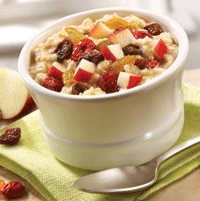A look at the morning daypart business in QSR and FSR
Morning meals are satisfying today’s busy diners more than ever, so now’s the time to capitalize on the trend. As the daypart continues to gather steam, F&H zeroes in on the growing breakfast wars in quick-service and the food impacting full-service where sales remain steady. We break it down.
BREAKFAST
Breakfast is the most important meal of the day, so we’ve been told, and Canadians appear to be getting the message, though perhaps not in the way nutritionists intended.
According to NPD Group market research, breakfast at quick-service restaurants (QSRs) is growing like hotcakes — up 14 per cent in the past year — making it the fastest-growing daypart. And the egg train shows no sign of slowing, with NPD forecasting the QSR morning meal will gain 10 per cent by 2016.
This sizzling growth can be attributed to the array of fast, fresh and convenient new offerings from major players such as Tim Hortons, McDonald’s and Subway — all well supported by marketing efforts, says Linda Strachan, foodservice industry analyst, NPD.
QSR operators also benefit from the influx of people skipping breakfast at home. “Our in-home tracking data shows only seven per cent of breakfasts are sourced from a restaurant,” Strachan says. “There’s lots more opportunity however, as nine per cent of breakfasts are still skipped.”
Breakfast represents 13 per cent of the dollars spent at QSRs. To capture that market, it’s important to understand that portability and convenience are key, says Strachan, explaining four out of 10 QSR breakfast snacks are ordered at the drive-thru. Only one out of five is eaten in the dining room, she adds. “It needs to be something that can be eaten in the car without ending up on your shirt or stay warm enough to be carried back to the office and still be edible.”
Enter the breakfast sandwich, purchased by four out of 10 QSR customers last year. It’s where the competition is particularly fierce. Egg McMuffin clones abound, from the Brekwich at Coffee Time to the upscale artisan breakfast sandwiches at Starbucks, where the bacon is applewood, smoked peppers are fire-roasted and the cheese is melted Gouda. In January, Starbucks offered a breakfast sandwich for $2.50 with the purchase of a beverage. And, according to NPD, Tim Hortons served more than 185-million breakfast sandwiches last year. “Two out of every three people buying breakfast at a restaurant in Canada chose to have their most important meal of the day at Tim Hortons,” notes Donna Finelli, director of Brand Marketing at the chain.
Alison Goldberg, public relations specialist at Subway’s world headquarters in Milford, Conn., attributes the growth in breakfast sales to the chain’s wide range of sandwiches, from indulgent steak, egg and cheese to a slim egg-white sandwich. But what really distinguishes Canada’s 2,718 Subway stores from the competition, she says, is the fact that customers can customize their sandwiches with an array of fresh vegetables, sauces and other toppings.
To give Canadians who eat on the go more healthy options, QSRs are beefing up the lighter side of the menu. McDonald’s urged customers to start the year off right with its new high-fibre fruit and maple oatmeal ($1.99). Tims debuted its egg-white sandwich in January for $1.99 (regular $2.69), joining its homestyle oatmeal, yogurt with berries and real fruit smoothies.
Starbucks’ low-fat offering is a toasted multigrain English muffin layered with reduced-fat turkey bacon, reduced-fat white Cheddar and egg whites. Subway’s yogurt parfait ($1.29), which weighs in at just two grams of fat, is topped with strawberries, blueberries and granola, Goldberg says.
These better-for-you items are small (each is about one-per-cent incidence), but growing, says Strachan. “It’s important to have something healthy for customers who are seeking it,” she says. “Otherwise they [won’t] choose a foodservice breakfast, and it’s a lost opportunity.”
With changing lifestyles, and people working different hours, the timing of breakfast is also under scrutiny. “We heard from our restaurant owners that guests would often come in and ask for breakfast beyond 11 a.m. only to find they had missed the window,” says Finelli. In response, Tim Hortons recently expanded its breakfast by an hour to noon during the week. Breakfast was previously offered until noon on weekends only.
Of course, you can’t have breakfast without coffee. Strachan says 58 per cent of breakfasts include a brewed coffee, while only nine per cent of breakfasts include a specialty coffee.
At McDonald’s, extensive renovations to make its stores more inviting appear to be paying off with the “highly successful” launch of its McCafé brand of authentic espresso-based beverages. “For the third consecutive year we have enjoyed double-digit growth on the strength of our coffee business as well as the quality, value and convenience of our menu offerings,” said Catherine Crozier, breakfast lead for McDonald’s Canada.
Tim Hortons, meanwhile, is promoting its lattes and new extra-large coffee, while Subway’s $3 breakfast combo pairs a ham and cheese egg-muffin melt with a 12-oz. cup of Seattle’s Best. With so much to choose from, ready in minutes, eating breakfast at home may soon be passé.
BRUNCH
There was a time when Sunday brunch was a glamorous affair, held in hotel ballrooms beneath sparkling chandeliers, with endless mirrored platters of artfully displayed food shimmering in aspic, crisp white linens and uniformed waiters eager to help Aunt Lillian to her table.
Fast-forward to today’s rough-and-tumble weekend brunch scene, with patrons jostling for space in casual restaurants across the country for the chance to devour rashers of crisp local bacon and cage-free eggs smothered in homemade hollandaise.
Though the line-ups would seem to indicate otherwise, neither breakfast nor brunch is growing at Canada’s full-service restaurants, according to Toronto-based NPD Research Group. With the exception of operators such as Quebec-based Cora’s, NPD’s Strachan, says consumers are opting for fast, convenient QSR breakfasts instead of a more leisurely full-service sit-down brunch.
According to NPD research, full-service brunch totalled more than 53-million visits worth $635 million in the past year. Full-service restaurant (FSR) brunch makes up three per cent of FSR dollars overall, and four per cent of dollars on weekends. The average check is also higher on weekends, at $12.20 per person compared to $10.95 on weekdays, Strachan adds.
It’s probably no surprise that NPD found 57 per cent of FSR brunches include eggs. Even at the glamorous La Société Bistro in Toronto, with its stained-glass ceiling and marble floors, many guests look past the terrine de foie de canard ($17) and mussels and frites ($19) and order the all-day eggs benedict. There’s La Société benedict, featuring Westphalian ham, poached eggs and hollandaise sauce on toasted brioche with potato hash ($16), florentine with sautéed spinach ($15) and butter-poached P.E.I. lobster benedict ($23). Short rib hash with a fried egg and hollandaise ($18) is another big seller on the vast menu.
“For me, brunch is comfort food,” says executive chef James Olberg, who averages 275 covers on both Saturday and Sunday. “Our brunch clients don’t want blood sausage, they want country sausage, eggs and toast with butter and a little jam. At the same time, we sell the odd seafood tower ($145) with champagne,” he says. “It’s nice that people come in with different visions of what they want from
our property.”
Getting the right mix for brunch is a challenge, admits Tim Palmer, chef de cuisine, who launched the local-inspired à la carte weekend brunch last summer at Toronto’s Fairmont Royal York’s fine-dining restaurant, Epic. “How far ‘lunchy’ do you go?,” asks Palmer. A wild mushroom tart with poached eggs didn’t work, but he’s extremely pleased with sales of Epic’s two eggs with Perth Pork Products’ slab bacon ($20), a smoked trout benedict ($21) with trout from a Muskoka hatchery on white Cheddar biscuits, and a pretzel loaf baked by French chef Mark Thuet piled high with smoked meat ($21) from local deli owner Zane Caplansky.
Palmer believes the economic downturn and families spending more time together at home spelled the end of the grand hotel buffet. “Our focus now is not about how much you can pile on a plate but on the quality of the products and where they’re sourced,” he says.
Only a handful of big brunch buffets remain in Vancouver, confirms Terry Hayashi, general manager of the 65-seat Raincity Grill on the city’s west side. They’ve been replaced by a number of small, casual restaurants focusing on local products straight from the farm, a concept Raincity pioneered 20 years ago.
Saturdays bring couples and friends dropping in, Hayashi says, while Sunday brunch still attracts families. Everyone “goes crazy” for chef Jennifer Peters’ butter-braised Dungeness crab benedict on an English muffin ($16), even though it’s not on the menu. The classic English Bay breakfast ($16) with everything on one plate is another winner.
With so much competition, Hayashi says the city’s brunch price point has dropped. “It’s been a couple of hard years for the economy and people are looking for value, they’re looking for deals,” he says. Two years ago, Raincity introduced a prix-fixe lunch, offering two courses for $20. The menu now makes up 50 per cent of sales.
Recognizing customers is another key to success, says Hayashi. “If they like their eggs a little more cooked they don’t want to have to ask you each time they come in.” Raincity guests also appreciate the complimentary warm apple cider and scones that arrive after their order is taken.
Today’s customers want to see the chef’s identity on each plate and they’re looking to chefs to redefine the classics, Hayashi adds. “The days of cookie-cutter brunch menus are over.”
Keep Reading
The Sizzle of Success: Burgers and Fries
Kicking it Up a Notch: How to Add a Modern Twist to Traditional Italian Food
Will Social Media Help Build Your Business?
From Fired to Inspired: Chef Scott Bagshaw




















